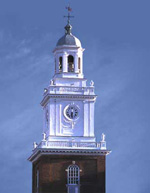Seeing History
John Martin Vincent
Graduate study on the European model was first undertaken, in America, at Johns Hopkins University. It was thus only natural that one of the first manuals of the new and more objective history should come from a Johns Hopkins professor. It appeared in 1911. It agrees with Langlois et Seignobos (whose work had appeared in English translation only two years earlier) that the criticism of sources is an integral and fundamental part of the historian's craft, though it aims to present this and other principles more concisely. Its preface reads in part:
Experience has shown that both time and facility are gained by a rapid review at the outset of the principles and scope of the science; for, although historical research is only the application of logic and common sense to the past affairs of mankind, the numerous varieties of material and their respective values are not always at first obvious. It is on this account that certain of the auxiliary sciences are introduced, not with a view of providing complete information, but in order to exhibit the foundations upon which the genuine sources must rest.
The large place given to philology among those "auxiliary sciences" (starting with "external criticism" in Chapter 3), may be seen in the table of contents of the work, which in general follows the topical arrangement of Langlois et Seignobos. Here it is:
- 1. The Definition of History (1)
- 2. The Classification of Historical Materials (13)
- 3. External Criticism (19)
- 4. Palaeography (44)
- 5. Diplomatics (55)
- 6. Chronology (70)
- 7. The Seal of the Document (84)
- 8. The Time and Origin of Sources (97)
- 9. Determination of Authorship (101)
- 10. Interdependence of Sources (111)
- 11. The Search for the Truth (120)
- 12. The Writer and His Times (133)
- 13. Evaluation of Oral Tradition (142)
- 14. Pictorial Sources of History (155)
- 15. Criticism and Interpretation of Records (168)
- 16. Judicial Documents (185)
- 17. Administrative Documents (190)
- 18. Private Documents (207)
- 19. The Newspaper as a Source of History (215)
- 20. Relics (231)
- 21. The Nature of Historical Evidence (248)
- 22. The Constructive Process (261)
- 23. Psychological Factors in History (278)
- 24. The Presentation (288)
- 25. Literary Style in History (303)
- Bibliography (327)
- Index (341)
Properly considered, besides the space given to textual criticism in the obvious sense, nearly all of this is about the criticism of the sources for history, including a typology of documents, and only a small concluding span is on the writing of history from the sources once they have been criticized. Some of Vincent's warnings about the dangers of believing written sources have been included in the pages of our Errors section; see in particular the Tell Fallacy, from Vincent's Chapter 13; and the Marco Polo Fallacy, where reference is made to Vincent's Chapter 17. Here is a more general comment on documentary credibility, from Vincent's Chapter 11 (The Search for the Truth):
The document or relic must be shown to be genuine before we begin to take evidence from it, but external criticism does not attempt to determine the facts in the case, nor does the proof of the genuineness of a document prove that it tells the truth. The failure to observe that axiom wrought great havoc in mediaeval history. The inclination to accept everything written, not only as genuine, but true because written, perpetuated the errors as well as the falsehoods of the past. There exists even yet the temptation to accept the words of predecessors without sufficiently weighing their value.
Ninety years after Vincent, people no longer read Vincent. They routinely, in their PhD dissertations, make the errors of which he warned, and for the avoidance of which he gave systematic, if brief, instruction. So much for the 20th century. Perhaps some progress can be made, or some ground now lost can be regained, in the 21st.
17 Dec 2006 / Contact The Project / Exit to History Page
